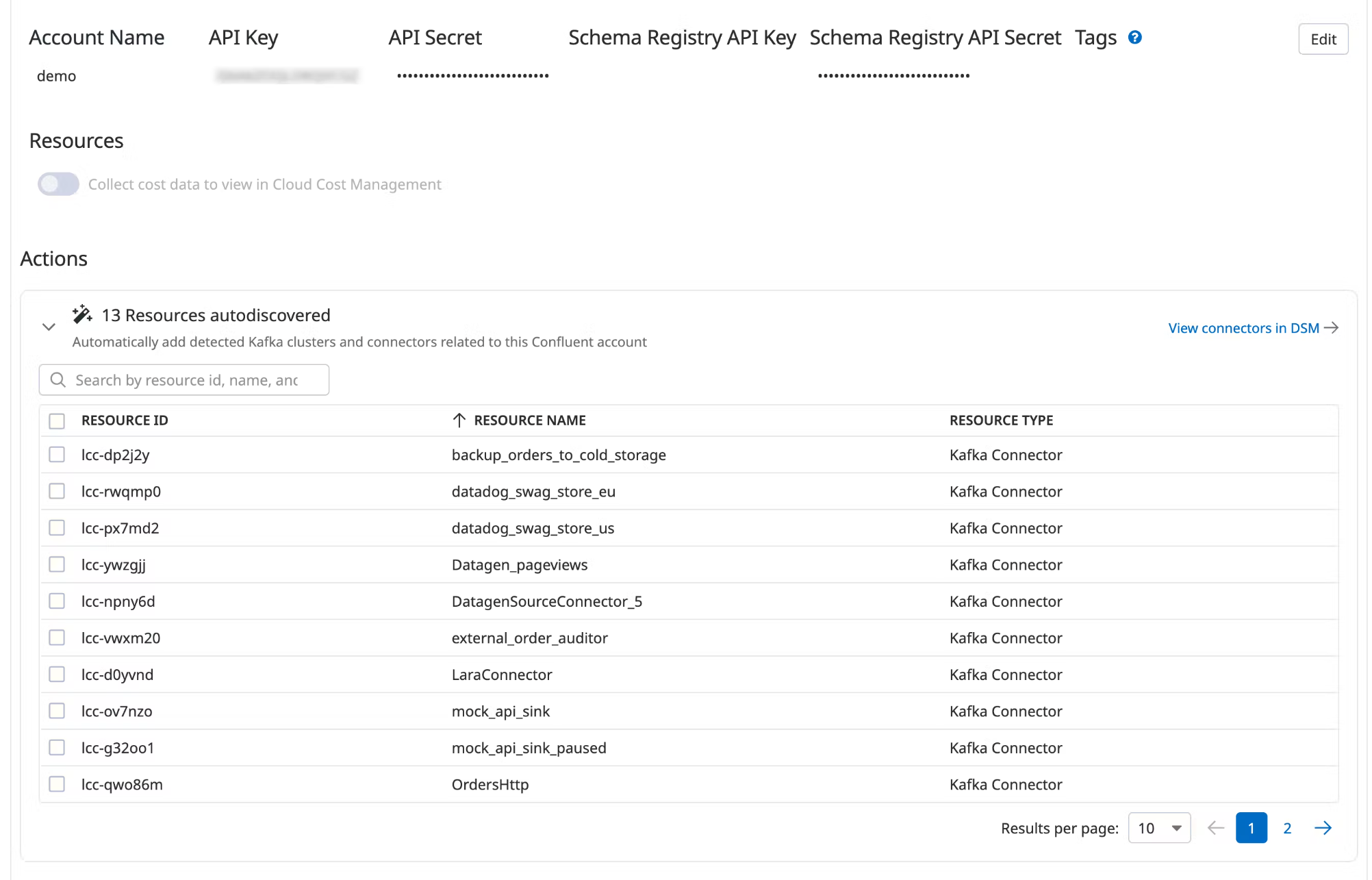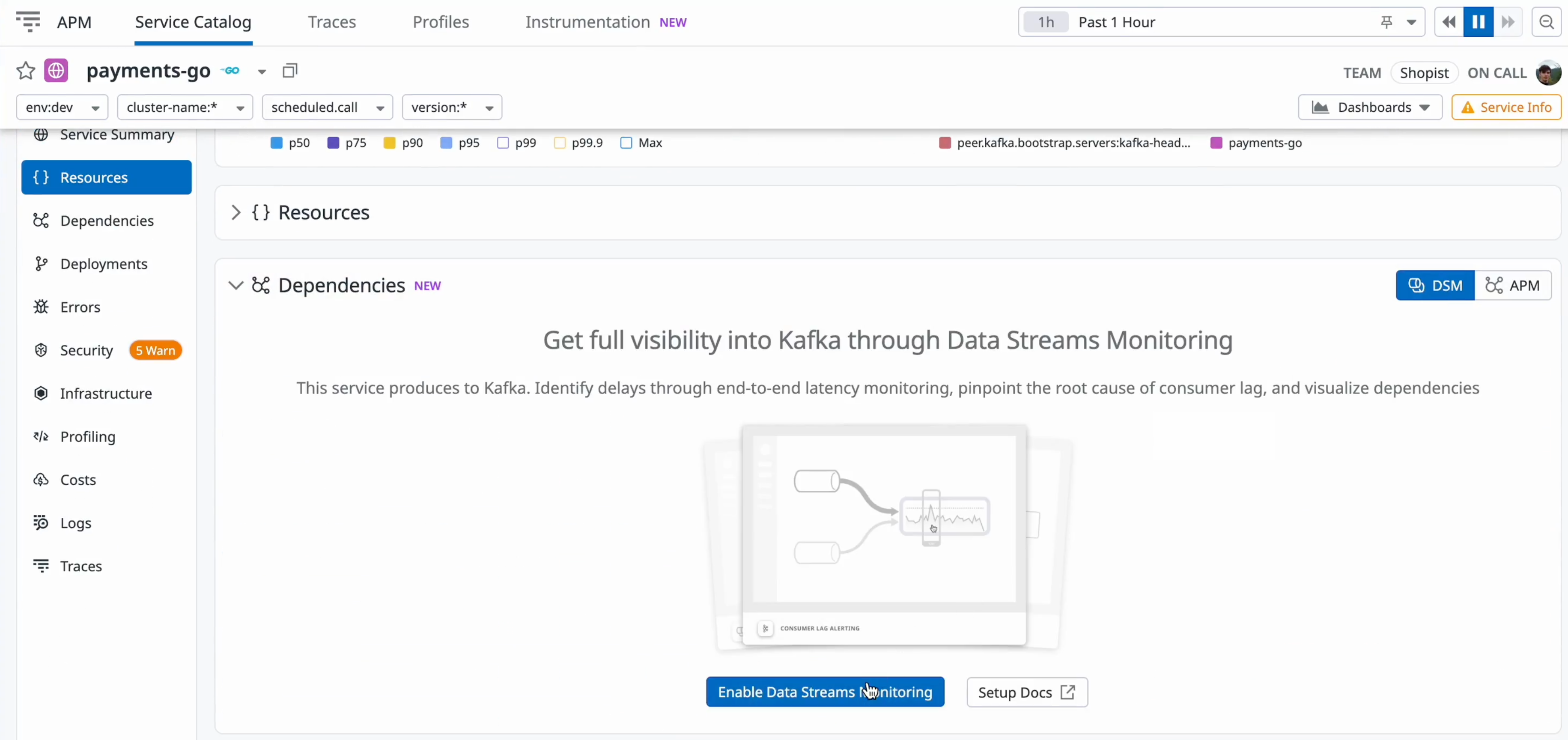- Essentials
- Getting Started
- Agent
- API
- APM Tracing
- Containers
- Dashboards
- Database Monitoring
- Datadog
- Datadog Site
- DevSecOps
- Incident Management
- Integrations
- Internal Developer Portal
- Logs
- Monitors
- Notebooks
- OpenTelemetry
- Profiler
- Search
- Session Replay
- Security
- Serverless for AWS Lambda
- Software Delivery
- Synthetic Monitoring and Testing
- Tags
- Workflow Automation
- Learning Center
- Support
- Glossary
- Standard Attributes
- Guides
- Agent
- Integrations
- Developers
- Authorization
- DogStatsD
- Custom Checks
- Integrations
- Build an Integration with Datadog
- Create an Agent-based Integration
- Create an API-based Integration
- Create a Log Pipeline
- Integration Assets Reference
- Build a Marketplace Offering
- Create an Integration Dashboard
- Create a Monitor Template
- Create a Cloud SIEM Detection Rule
- Install Agent Integration Developer Tool
- Service Checks
- IDE Plugins
- Community
- Guides
- OpenTelemetry
- Administrator's Guide
- API
- Partners
- Datadog Mobile App
- DDSQL Reference
- CoScreen
- CoTerm
- Remote Configuration
- Cloudcraft (Standalone)
- In The App
- Dashboards
- Notebooks
- DDSQL Editor
- Reference Tables
- Sheets
- Monitors and Alerting
- Watchdog
- Metrics
- Bits AI
- Internal Developer Portal
- Error Tracking
- Change Tracking
- Service Management
- Service Level Objectives
- Incident Management
- On-Call
- Status Pages
- Event Management
- Case Management
- Actions & Remediations
- Infrastructure
- Cloudcraft
- Resource Catalog
- Universal Service Monitoring
- End User Device Monitoring
- Hosts
- Containers
- Processes
- Serverless
- Network Monitoring
- Storage Management
- Cloud Cost
- Application Performance
- APM
- APM Terms and Concepts
- Application Instrumentation
- APM Metrics Collection
- Trace Pipeline Configuration
- Correlate Traces with Other Telemetry
- Trace Explorer
- Recommendations
- Code Origin for Spans
- Service Observability
- Endpoint Observability
- Dynamic Instrumentation
- Live Debugger
- Error Tracking
- Data Security
- Guides
- Troubleshooting
- Continuous Profiler
- Database Monitoring
- Agent Integration Overhead
- Setup Architectures
- Setting Up Postgres
- Setting Up MySQL
- Setting Up SQL Server
- Setting Up Oracle
- Setting Up Amazon DocumentDB
- Setting Up MongoDB
- Connecting DBM and Traces
- Data Collected
- Exploring Database Hosts
- Exploring Query Metrics
- Exploring Query Samples
- Exploring Database Schemas
- Exploring Recommendations
- Troubleshooting
- Guides
- Data Streams Monitoring
- Data Jobs Monitoring
- Data Observability
- Digital Experience
- Real User Monitoring
- Synthetic Testing and Monitoring
- Continuous Testing
- Product Analytics
- Software Delivery
- CI Visibility
- CD Visibility
- Deployment Gates
- Test Optimization
- Code Coverage
- PR Gates
- DORA Metrics
- Feature Flags
- Security
- Security Overview
- Cloud SIEM
- Code Security
- Cloud Security
- App and API Protection
- Workload Protection
- Sensitive Data Scanner
- AI Observability
- Log Management
- Administration
Setup Data Streams Monitoring for Java
Prerequisites
Supported libraries
| Technology | Library | Minimal tracer version | Recommended tracer version |
|---|---|---|---|
| Kafka | kafka-clients (Lag generation is not supported for v3.7) | 1.9.0 | 1.43.0 or later |
| RabbitMQ | amqp-client | 1.9.0 | 1.42.2 or later |
| Amazon SQS | aws-java-sdk-sqs (v1) | 1.27.0 | 1.42.2 or later |
| Amazon SQS | sqs (v2) | 1.27.0 | 1.42.2 or later |
| Amazon Kinesis | Kinesis (v1) | 1.22.0 | 1.42.2 or later |
| Amazon Kinesis | Kinesis (v2) | 1.22.0 | 1.42.2 or later |
| Amazon SNS | SNS (v1) | 1.31.0 | 1.42.2 or later |
| Amazon SNS | SNS (v2) | 1.31.0 | 1.42.2 or later |
| Google PubSub | Google Cloud Pub/Sub | 1.25.0 | 1.42.2 or later |
| IBM MQ | IBM MQ classes for Java and JMS | 1.55.0 | 1.55.0 or later |
Installation
To enable Data Streams Monitoring, set the following environment variables to true on services that are sending or consuming messages:
DD_DATA_STREAMS_ENABLEDDD_TRACE_REMOVE_INTEGRATION_SERVICE_NAMES_ENABLED
environment:
- DD_DATA_STREAMS_ENABLED: "true"
- DD_TRACE_REMOVE_INTEGRATION_SERVICE_NAMES_ENABLED: "true"
Run the following when you start your Java application:
java -javaagent:/path/to/dd-java-agent.jar -Ddd.data.streams.enabled=true -Ddd.trace.remove.integration-service-names.enabled=true -jar path/to/your/app.jar
One-Click Installation
To set up Data Streams Monitoring from the Datadog UI without needing to restart your service, use Configuration at Runtime. Navigate to the APM Service Page and Enable DSM.
Setup
Use Datadog’s Java tracer, dd-trace-java, to collect information from your Kafka Connect workers.
- Add the
dd-java-agent.jarfile to your Kafka Connect workers. Ensure that you are usingdd-trace-javav1.44+. - Modify your Java options to include the Datadog Java tracer on your worker nodes. For example, on Strimzi, modify
STRIMZI_JAVA_OPTSto add-javaagent:/path/to/dd-java-agent.jar.
Monitoring SQS pipelines
Data Streams Monitoring uses one message attribute to track a message’s path through an SQS queue. As Amazon SQS has a maximum limit of 10 message attributes allowed per message, all messages streamed through the data pipelines must have 9 or fewer message attributes set, allowing the remaining attribute for Data Streams Monitoring.
Monitoring RabbitMQ pipelines
The RabbitMQ integration can provide detailed monitoring and metrics of your RabbitMQ deployments. For full compatibility with Data Streams Monitoring, Datadog recommends configuring the integration as follows:
instances:
- prometheus_plugin:
url: http://<HOST>:15692
unaggregated_endpoint: detailed?family=queue_coarse_metrics&family=queue_consumer_count&family=channel_exchange_metrics&family=channel_queue_exchange_metrics&family=node_coarse_metrics
This ensures that all RabbitMQ graphs populate, and that you see detailed metrics for individual exchanges as well as queues.
Monitoring SNS-to-SQS pipelines
To monitor a data pipeline where Amazon SNS talks directly to Amazon SQS, you must perform the following additional configuration steps:
Set the environment variable
DD_TRACE_SQS_BODY_PROPAGATION_ENABLEDtotrue.For example:
environment: - DD_DATA_STREAMS_ENABLED: "true" - DD_TRACE_REMOVE_INTEGRATION_SERVICE_NAMES_ENABLED: "true" - DD_TRACE_SQS_BODY_PROPAGATION_ENABLED: "true"Ensure that you are using Java tracer v1.44.0+.
Enable Amazon SNS raw message delivery.
Monitoring Kinesis pipelines
There are no message attributes in Kinesis to propagate context and track a message’s full path through a Kinesis stream. As a result, Data Streams Monitoring’s end-to-end latency metrics are approximated based on summing latency on segments of a message’s path, from the producing service through a Kinesis Stream, to a consumer service. Throughput metrics are based on segments from the producing service through a Kinesis Stream, to the consumer service. The full topology of data streams can still be visualized through instrumenting services.
Manual instrumentation
Data Streams Monitoring propagates context through message headers. If you are using a message queue technology that is not supported by DSM, a technology without headers (such as Kinesis), or Lambdas, use manual instrumentation to set up DSM.
Monitoring connectors
Confluent Cloud connectors
Data Streams Monitoring can automatically discover your Confluent Cloud connectors and visualize them within the context of your end-to-end streaming data pipeline.
Setup
Install and configure the Datadog-Confluent Cloud integration.
In Datadog, open the Confluent Cloud integration tile.

Under Actions, a list of resources populates with detected clusters and connectors. Datadog attempts to discover new connectors every time you view this integration tile.
Select the resources you want to add.
Click Add Resources.
Navigate to Data Streams Monitoring to visualize the connectors and track connector status and throughput.
Self-hosted Kafka connectors
Requirements: dd-trace-java v1.44.0+
This feature is in Preview.
Data Streams Monitoring can collect information from your self-hosted Kafka connectors. In Datadog, these connectors are shown as services connected to Kafka topics. Datadog collects throughput to and from all Kafka topics. Datadog does not collect connector status or sinks and sources from self-hosted Kafka connectors.
Setup
- Ensure that the Datadog Agent is running on your Kafka Connect workers.
- Ensure that
dd-trace-javais installed on your Kafka Connect workers. - Modify your Java options to include
dd-trace-javaon your Kafka Connect worker nodes. For example, on Strimzi, modifySTRIMZI_JAVA_OPTSto add-javaagent:/path/to/dd-java-agent.jar.
Further reading
Additional helpful documentation, links, and articles:

